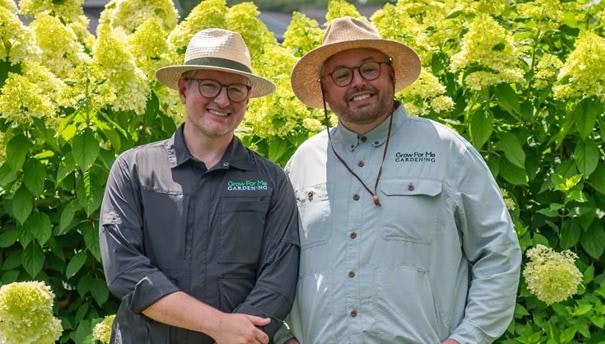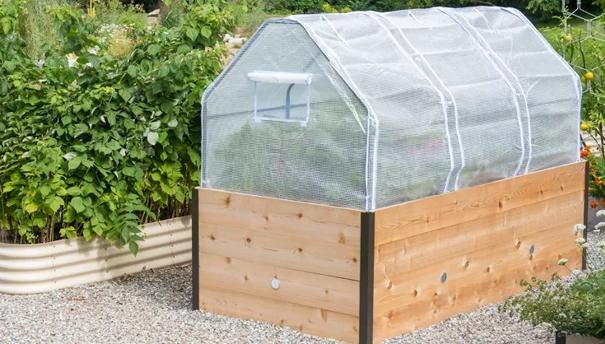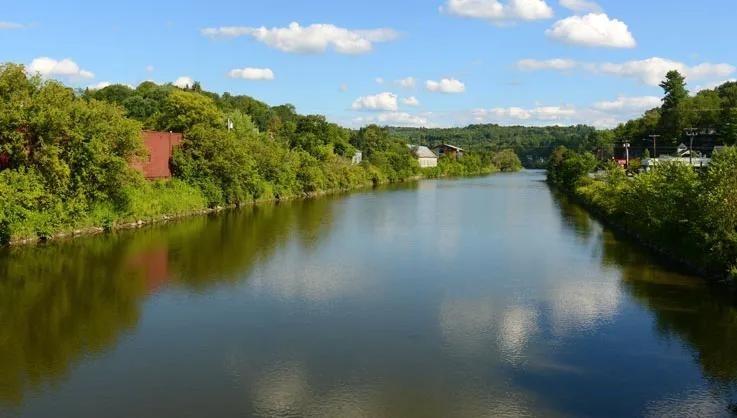Soil Calculator
Choose a garden or planter style:
"Raised Bed" calculates in cubic yards and cubic feet.
"Pot or Elevated Planter" calculates in quarts.
Select the shape:
Enter the measurements:
Good soil is the single most important ingredient for a good garden. Raised beds give you an immediate advantage over an in-ground garden, because you can fill your raised bed with a blend of soil that's superior to the native soil (or sometimes, unfortunately, dirt) in your yard. Soil that's loose and rich with nutrients and organic matter will allow the roots of your plants to grow freely, and ensure that they have access to the water and nutrients they need to sustain healthy growth.
Example: How Much Soil Do I Need for a 3x6 Bed?
To fill a 3x6 bed with 10" sides, you will need 15 cubic feet of blended soil. To create the blend, use the following quantities:
- 9 cubic feet of topsoil (9 20-quart bags)
- 4.5 cubic feet of compost (4.5 20-quart bags)
- 1.5 cubic feet of soilless
- 1.5 cups Gardener's Supply
Before placing your in their permanent location, be sure to remove any grass or perennial weeds from the area. Use a garden fork or shovel to loosen the native soil to a depth of 6-10″. This will improve drainage and moisture retention in the raised beds. It also means that even with a 5″-high raised bed, your plants will think they're growing in a bed that's 12-18″ deep — plenty of room for carrots, potatoes, full-size tomato plants and most any other vegetable you'd ever want to grow.
'Soil Recipe': Creating an Ideal Soil Blend for Raised Bed Gardens
If you'll be filling more than one raised bed, you may want to buy your soil in bulk — by the cubic foot or cubic yard. Use the Soil Calculator to figure out the total amount of soil you'll need for each bed. For most situations, we recommend these proportions:
- 60 percent topsoil
- 30 percent compost
- 10 percent .
Keep in mind that proportions are approximate because soil volume varies from source to source. For instance, if the calculator specifies 0.444 cubic yards of soil for your bed, go ahead and round it up to a half yard.
If you do not have access to quality topsoil, an acceptable substitute would be a 50-50 blend of soilless growing medium and compost. If you want to add peat moss to the bed, it should not be more than 20 percent of the total mix. Peat moss is naturally acidic and is not a good medium for growing vegetables.
Shop Gardening Essentials
In our shop, you'll find dozens of options for , , , , , , , and .
'Can I Re-use Old Potting Soil?' Yes!

Blend new soil into the old soil.
Top It Off! If the level of soil has dropped, add also known as potting mix. Ideally, the soil comes to within an inch or so of the rim of the planter or raised bed. Use a fork or hand tool to blend the new soil into the old soil.

After a season of growth the soil in this raised bed is a couple inches low.

Gardener's Supply Organic All-Purpose Fertilizer and Container Booster Mix
Recharge It! Measure the square footage of your raised bed or pot to figure out how much of the two "secret ingredients" you need for your bed.
- : Use 1/4 cup per square foot. Slow-release, granular organic fertilizers give plants balanced nutrients for vigorous root growth and improved water penetration all season long.
- : Use 3 cups per square foot. This is the secret sauce! This potent, all-organic formula includes a complete diet of nutrients and trace elements to keep plants lush and healthy: concentrated plant and manure compost, washed granite, black rock phosphate, and other natural ingredients.

Fertilizer and booster mix sprinkled on the soil surface.
Sprinkle the granular fertilizer and booster mix onto the soil surface. Use a hoe or cultivating tool to incorporate the ingredients into the top few inches of soil.
Plant, Feed, and Repeat! Now sow seeds or plant transplants into your raised bed, and then stand back. Great results are sure to follow. During the season, keep your plants happy by feeding them regularly.

Plants grow stronger and faster with regular feeding.



